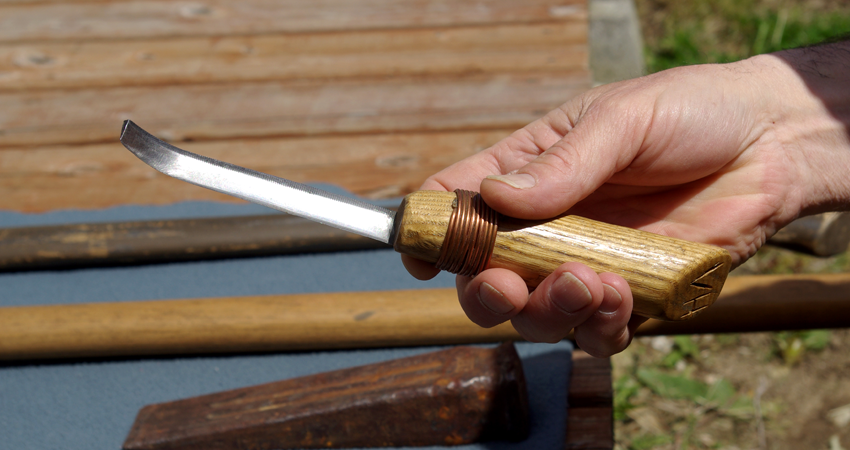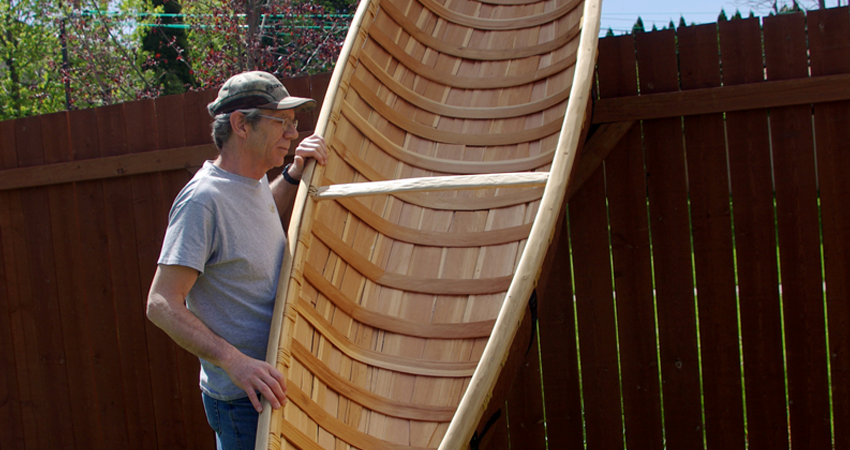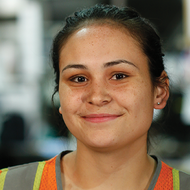Growing up across the river from Teck’s Trail Operations in the small community of Sunningdale, B.C., Vern Harkness followed in the footsteps of his father, grandfather and brother before him, pursuing a career in the smelting business.
Starting at Trail Operations in 1974 as a Tank Cleaner/Puller, Vern worked his way up to a position as Furnaceman, spending the majority of his nearly 40 years at Teck in this role before retiring in 2013.
In his personal life, Vern had long felt a deep connection to his cultural heritage and the outdoors—his mother was Métis, born to a Cree mother, and he grew up hunting, fishing, gathering and camping.
Retirement provided more time to explore his interests, and after reading an inspiring article on Métis pioneers, Vern decided to undertake a passion project: construct a traditional canoe using only historical methods, materials and tools.
Armed with his Indigenous intuition and competitive spirit—as well as some information found online—he embarked on a 10-month-long journey.
When the canoe was finally finished, Vern proudly took to a nearby lake with his handcrafted oar to test the boat on the water. And it was a great success!
Asked about the most difficult part in creating the magnificent 15' 2" vessel, Vern revealed it was the hours of carving and smoothing the pieces, especially the ribs and small pegs. And the most surprising aspect? The lightness of the finished product, noting that “you start with about 300 pounds of wood and end up with a 45-pound boat!”
As for what he hopes to do with his finished piece, Vern says he is currently looking into the possibility of donating the piece and tools to a museum that displays Aboriginal artwork.
“Who knows, maybe one day this will be a historical Métis piece too.”
How I Built Aen Kanoo Di Buloo (A Birchbark Canoe): The Steps In Vern’s Words
With this type of traditional canoe, you build the skin first and place the frame in afterwards. The basic materials used are birchbark for the outer skin; cedar for the gunwales, ribs and lining; spruce roots for sewing; and a spruce resin compound for gumming.
First I gathered limited hand tools I would use for the project, which included a saw, an axe, a long knife,—and most crucial—the crooked knife I handcrafted.

As spring is the time to harvest birchbark, my goal was to have all of the possible pieces prepared by then. In the winter, I went to my harvesting area for the cedar—a region 6 kilometres from Trail called Fort Shepherd, which was historically connected to the Hudson’s Bay Company (in 1858) and used by Indigenous Peoples as a traditional base for fishing and hunting. Cedar is light and easy to work with, but strong; however, it takes much time to gather ‘clear wood’ (no knots).
Next I began carving out the ribs and smoothing them with the crooked knife. Each rib needed to be steamed with water to make pliable and then carefully bent free-hand.
In the spring when the sap was running, the birch was ready to be harvested. Birchbark is an ideal material for canoe construction, being smooth, hard, light, resilient and waterproof. I returned to Fort Shepherd and skinned bark off the trees—careful not to disturb the dark brown layer beneath that could damage the tree.
Then at home, I laid out the cleaned birchbark white side up, placed the canoe-shaped cedar frame on top and weighted down the frame so it wouldn’t move. Boiling water poured around the sides of the birchbark made it bendable, almost leather-like, so it could be curved upwards to form the sides of the canoe before placing posts in to keep the skin in place.
By the summer, I was stitching the gunwales—the top edges of the canoe that you paddle over—to the sides of the boat in intervals of about 5” and inserting thwarts to hold the boat apart and give the vessel its width.
Afterwards, I flipped the boat upside down and began sewing together the patches of birch with spruce root, like I was making a quilt. Once I finished sewing the rest of the canoe’s seams together—which required a different type of skillful stitch than the other parts—I flipped the boat back over.
Each rib was then pressure-fit inside the boat, beginning from the outside and working towards the middle, while tailoring each piece as needed along the way. At the same time, I lined the inside with thin strips of cedar.
Nearly finished, I pinned on the top gunwale with hand-carved birch pegs. In total, about 90 hand-carved birch pegs were used throughout the canoe, which each took 20 minutes to make. Since there are no screws or nails, the square pegs are driven into round holes in the cedar to give more pressure.
Finally, I made a gum mixture comprised of finely ground elk droppings, charcoal, bear fat, and pine and spruce sap. Once cooked down into a liquid form and strained to remove impurities, I used the black paste to seal all the seams and prevent leaks.
At last… Aen Kanoo Di Buloo, which is Michif (language of the Métis) for a birchbark canoe.

.png)


